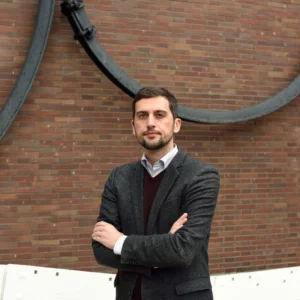More than Participation. The Digital Audience as a Driver of Innovation in the Performing Arts
Lecture at the "Transformations of the theatrical landscape" symposium
Dr. Henning Mohr & Svenja Reiner,
Institute for Cultural Policy of the Kulturpolitische Gesellschaft, Bonn
Exposé
The explorative short study conducted by the Institute for Cultural Policy analyzes the current development trends in digital theater within the context of changing modes of audience reception. On the basis of an evaluation of a total of 15 guided interviews, each 60-80 minutes long, with actors from the field of the performing arts, a variety of potentials for digital theater in terms of new forms of expression and a broadening of target groups could be elaborated. At the same time, existing structural deficits and blockades in connection with the attempts at digital transformation were revealed. In order to provide a range of contrasting perspectives, the interview sample consisted of nine pre-selected, external digital experts and six project organizers who were funded in the course of the #TakeThat program of the Fonds Darstellende Künste. The interviews were coded using MAXQDA software concerning the categories: audience/target group, digital technologies, formats, artistic work, (digital) mediation, production, interaction/communication, cultural policy, personnel and digital theater, in a multistage, iterative procedure based on grounded theory methodology and evaluated according to a derivation of possible reference points for theorizing.
The study showed that the digital space holds many potentials for the performing arts, such as new aesthetics, central confrontations with contemporary issues, and new audiences, but also entails profound transformation needs with regard to existing institutional understandings, modes of production, hierarchies and ways of working. The digital practices that have emerged – sharing, hacking and community building – serve as structuring principles to meet the audience's need to take responsibility and participate. This is accompanied by the implementation of additional structures and related process logics (as a cross-section) in the existing hierarchical systems, so that section logic, departmental separation and the classic canon of plays must be considered partly obsolete.
In order to meet the changing needs, a form of digital theater offers itself as a platform that, through its connectivity to the outside world, enables the interaction of a wide variety of actors and diverse expertise in dynamic work processes. This also requires alternative cultural policy funding systems, in which, among other things, project durations are extended, bureaucracies are reduced and accessibility funding is made possible, as well as a re-evaluation of eligible performances and their quality assessment. In addition, there is a need for culture(s) of continuing education in order to better anchor the complexity of the topic in relation to an application in the systems.
Involved
-
Dr. Henning Mohr
Institute for Cultural Policy, Bonn
 © Helena Grebe
© Helena Grebe
Dr. Henning Mohr
Institute for Cultural Policy, BonnHenning Mohr has headed the Institute for Cultural Policy of the Kulturpolitische Gesellschaft since January 2020. In his work, he deals intensively with the basic features of an innovation-oriented cultural policy. Previously, he worked as a cultural and innovation manager, among others for the German Mining Museum Bochum and the Future Academy NRW. Between 2012 and 2016, Henning Mohr completed his doctorate at the DFG Research Training Group "Innovation Society Today" (TU Berlin, Institute of Sociology) on the innovation potential of artistic processes.
-
Svenja Reiner
Institute for Cultural Policy, Bonn
 © Roland Baege
© Roland Baege
Svenja Reiner
Institute for Cultural Policy, BonnSvenja Reiner is a research associate at the Institute for Cultural Policy in Bonn. She studied English, American Studies and Economics (B.A.), International Arts Management (M.A.) and Musicology (M.A.). Teaching on Musicology, Art & Culture Management, Popular Culture and its Reception at Osnabrück University of Applied Sciences, University of Münster, University of Cologne, Hochschule für Musik und Tanz, Cologne and WAM Die Medienakademie. Her doctoral project deals with high culture fandom in new music. She is also part of the artistic direction of INSERT FEMALE ARTIST - Literature Festival for Feminist Voices in Cologne.